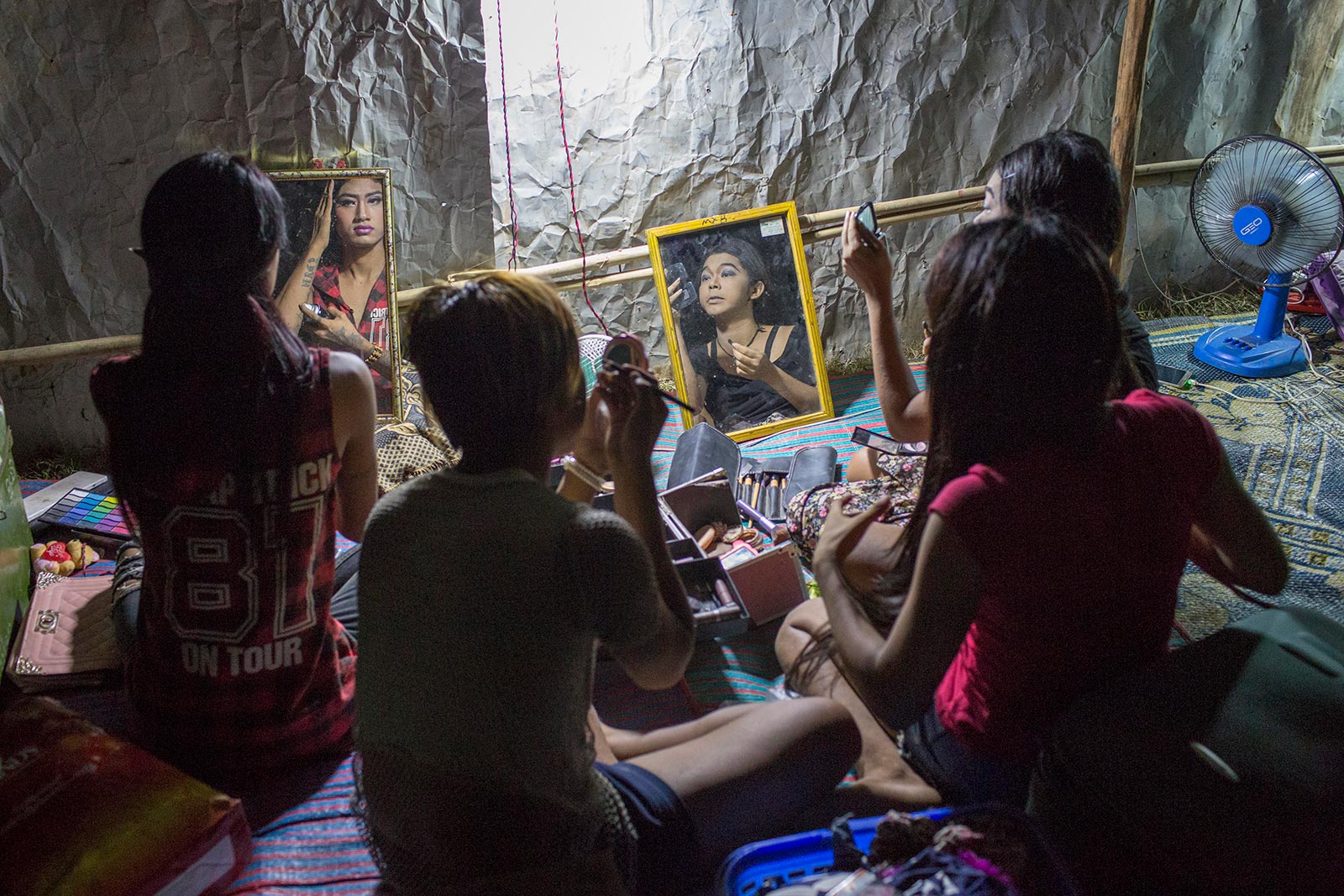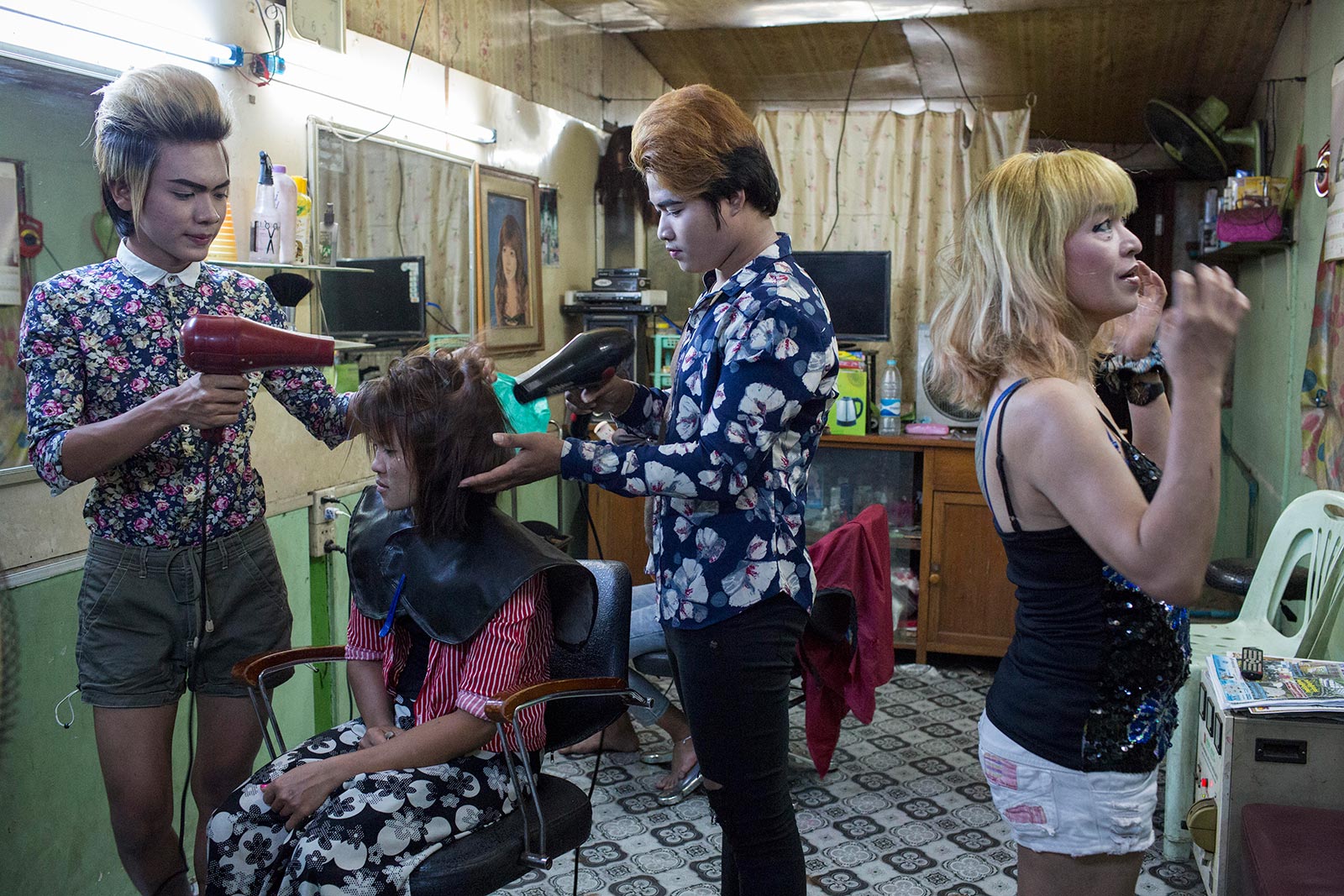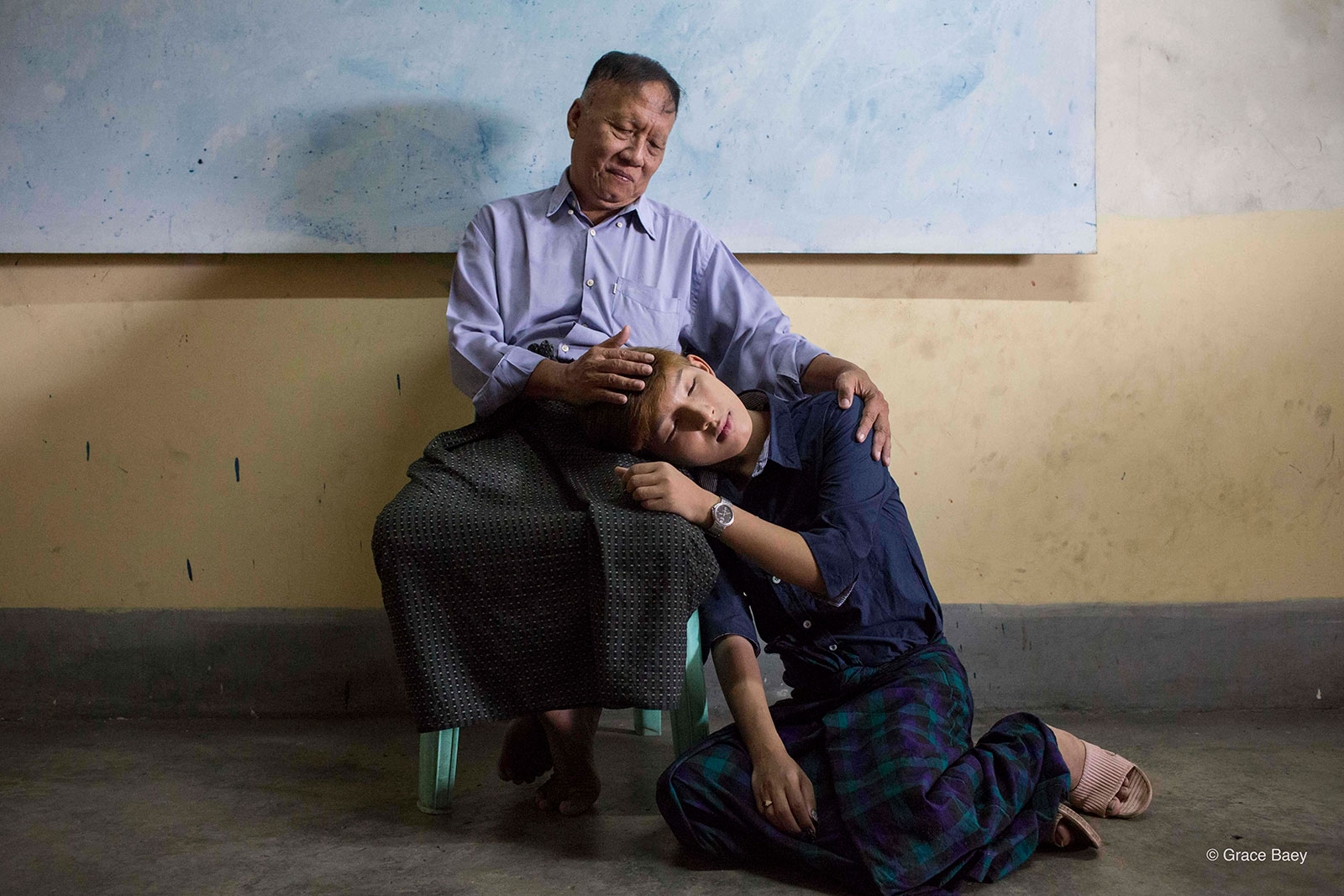Photographer Grace Baey spent February 2018 in Yangon, Myanmar, as part of Objectifs’ arts residency programme with Myanmar Deitta.
Objectifs spoke with Grace about her project documenting the transgender community in Myanmar, the relationships she forged during her residency, and how this series fits into her long-term project about the transgender community in Singapore.

What led you to apply for the Objectifs Arts Residency with Myanmar Deitta?
I applied for the Objectifs Arts Residency upon the encouragement of friends who knew of this opportunity, and thought that I might be interested. I’ve been meaning to spend time in Myanmar to explore a documentary project on the transgender community, and the residency felt like a perfect opportunity to do this.
I understand that you had done some research about the trans community in Myanmar before the residency? Did your encounters with people there paint a different picture from what you had read?
Prior to my arrival in Myanmar, the few online articles I managed to dig up on the transgender community tended to highlight a very specific narrative, i.e. repressive laws passed down from the country’s colonial era, and how the transgender community is particularly disadvantaged, especially from what is colloquially known as the “darkness law”, where police officers are given power to arrest anyone found to act suspiciously.
Many police officers abuse this power to demand extortion money from trans women, threatening them with arrest if they fail to pay a bribe. This situation seems particularly bad in places like Mandalay and specific townships in Yangon where sex workers are.
My time in Yangon painted a different picture of the community, probably also because I didn’t just want to focus my project on transgender sex workers. I was particularly interested in networks of social support and community resilience amongst trans men and women in Yangon. I also attended Yangon’s annual pride event, which allowed me to meet trans men and women across a wide range of social backgrounds, and these contacts formed the bedrock of my project.
Specifically, I met individuals whose families were very supportive of their gender identity, and others who still struggle with family acceptance. I also met a few trans men and women who worked in white-collar jobs, and others who have to juggle multiple informal jobs just to subsist on a daily basis.
Needless to say, the community is very diverse, which shouldn’t be surprising to anyone, but the media tends to paint a very narrow picture.

What were the challenges you faced in gaining access?
I was very handicapped by the language barrier whilst working on my project. To make things worse, I was told that the market rate for Burmese-English translation in Yangon was USD 100 to 300 a day, which was something I could not afford. Many people I met hardly spoke English, and so it was a great challenge for me to explain what I was doing in Yangon. Eventually I found someone from the LGBT community through an NGO contact who offered to assist me over a couple of weekends, and it offered a huge boost to the project.
What were the highlights of your residency?
The highlight of my residency would surely be the friendships I’ve made during my time in Yangon. I had to rely on the kindness of so many people, being a foreigner who didn’t speak the local language, and I am truly appreciative of the generous hospitality that was extended to me. I spent a lot of time with a group of young trans men and women, and they brought me to places they would hang out at, drinking cheap cocktails by the road that cost only SGD 0.50, and it was all great fun.
There was also a time when we wanted to make a portrait together at Yangon’s famous Shwedagon Pagoda, and my friends insisted that I shouldn’t pay the SGD 10 entrance fee that foreigners had to pay. Before I knew it, he whipped out a longyi for me and they dressed me outside the entrance before smuggling me in as a local. Thankfully I managed to pass off as a local, and didn’t get us into any trouble, though I’m not sure if I would do it again.

Was there anything that you wish could have been accomplished during the residency that you didn’t manage to?
I had slightly over three weeks in Yangon for the residency, and the majority of my time was spent trying to negotiate access. I certainly would have hoped to go deeper into some of the stories in the project, and three weeks is too short a time for an outsider to parachute into a place like Myanmar and expect to do meaningful work.
Nonetheless, I felt the residency was valuable in helping to kickstart what I see as a longer term project on the transgender community in Myanmar, and I will plan more trips back to continue the project.
How do you see the work you have created in Myanmar fitting into your long-term documentary projects?
The project in Myanmar focused on themes such as family, social resilience, and community support, which are similar themes that I’m looking at back home in Singapore. There’s a lot to be said about the rising conservatism we see around us these days, and conversations about diversity and social acceptance with regards to the LGBT community shouldn’t seek to alienate.
I do hope that by focusing on the scale of the family and community – looking at familial love, informal kinship, youth, and aspirations – we might be able to find more common ground for mutual understanding and acceptance.
*All photos are taken by Singaporean photographer Grace Baey during Objectifs’ arts residency programme with Myanmar Deitta. Repost with permission.
Matca is delighted to kickstart our 2019 with The Objectifs Reciprocal Artist Residency, in collaboration with Objectifs – Centre for Photography and Film. Objectifs has been actively fostering the creative scene in Singapore and the region for the past 10 years. Their annual residency program has provided many emerging artists with opportunities for cultural exchange and hands-on experiences.
